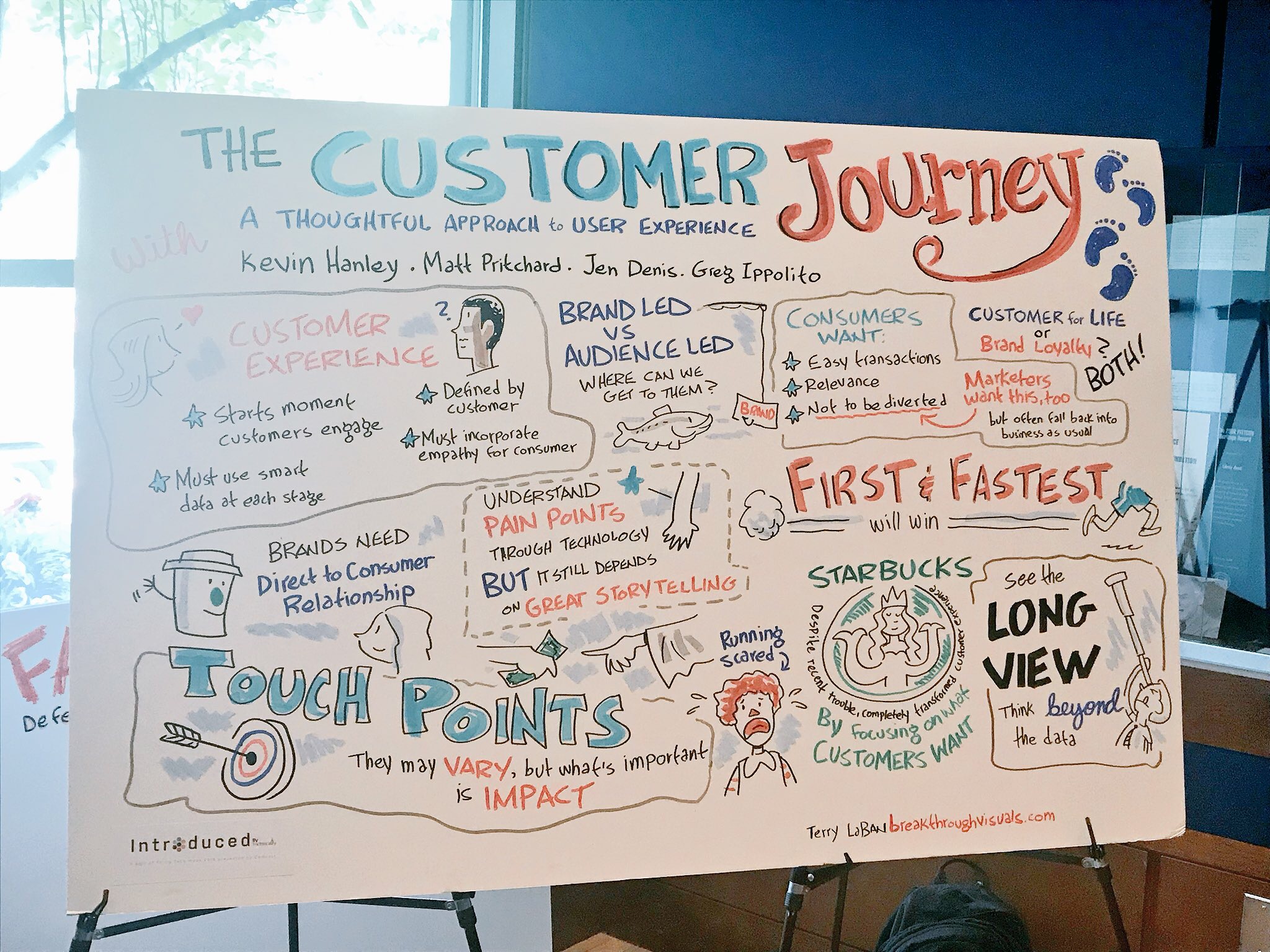Any brand is delighted when new customers discover, engage, and convert, but tracking that customer journey can be challenging for brands and agencies. On May 3, I moderated a panel discussion during Philly Tech Week’s Introduced by Technical.ly on the customer journey and user experience across multiple industries. There, we explored some of the most innovative ways to follow the customer journey and measure brand loyalty with Jen Denis (chief brand officer of honeygrow), Kevin Hanley (vp digital marketing at Hero Digital), Greg Ippolito (president & creative director of IMA), and Matt Pritchard (vp, digital acceleration at Campbell Soup Company). If you missed the event, here are a few of the most-loved learnings from the day!
UNDERSTANDING THE CUSTOMER JOURNEY REQUIRES EMPATHY
“A truly relevant customer experience is no longer the holy grail,” said Hero Digital's Kevin Hanley. “It’s table stakes.” But how do we get to that relevant experience? It’s critical for brands – no matter what industry they’re in and no matter what audience they serve – to tap into the mind of the consumer, understand their needs, and where the brand fits in. “Customer experience needs to be timely, relevant, and personalized,” Hanley explained. “The companies that are going to be most successful will either be the first or the fastest with this human-centered approach.”
Greg Ippolito of IMA agreed, citing Starbucks. Despite the company’s recent trouble, Starbucks completely transformed the customer experience by focusing on what customers actually want. And now more than ever, there are so many opportunities to better understand this part of the customer journey. The latest technologies, including machine learning and AI, can help marketers listen more closely, target audiences more narrowly and directly, and even connect with them in unique ways, said Campbell Soup Company’s Matt Pritchard. However, he also noted that while marketers can better understand their customers’ pain points through technology, how we respond to that data still relies upon great storytelling.
THREE THINGS TO CONSIDER IN CUSTOMER JOURNEY STORYTELLING
Once that data is in place, Hanley said, there are three things to consider before sending out any communication.
- Does the customer need to hear this?
What value does it add for the customer to have this information? If the answer is “none” – or if the answer is entirely self-serving for the brand – it’s time to reconsider that message.
- Do they need to hear it from me?
Considering which voice(s) might be most credible in delivering the message is crucial to the success of the communication. While the brand may be the most authoritative voice on the subject, it may be more authentic to have fellow customers’ takes on the topic.
- Is there value in sending this message?
When crafting any piece of communication, marketers must evaluate the impact of the message. If it won’t result in a meaningful brand action – or won’t engage the audience effectively – it’s time to go back to the drawing board.
BECOME DATA-INFORMED, NOT DATA-DRIVEN
Data is a critical component to any marketer’s understanding of the customer journey, as all of our panelists agreed. However, Ippolito explained that brands should not be data-driven, as so many companies claim to be. Instead, they should be data-informed, breaking the data down into digestible pieces, learning from that information, then thinking beyond the data to create something new. “Don’t wait for data to give you license to try something new,” he advised. “Take a risk, then let the data tell you if you were right or not.”
